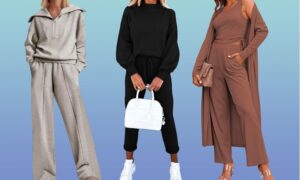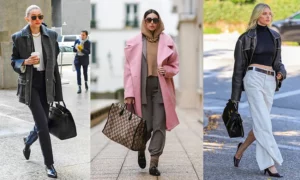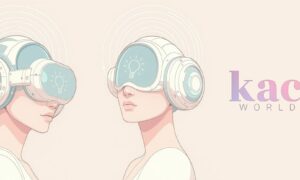Fashion and tech may not be the two most closely related industries, but their lines cross more than you’d expect. As consumer behavior within the fashion industry changed as a response to the pandemic, the fashion industry has been forced to adapt quicker than ever before. In today’s fashion world, growth is no longer driven by fast fashion and chasing trends.
Women, especially, are turning their backs on purchasing large quantities of low-value items in search of fewer, high-quality pieces. With these evolving demands, personalization and customization regarding both the customer experience and the garments they buy are no longer luxuries – they are necessary.
A Changing World Requires Ingenuity
Fashion customers are becoming more mindful of how they shop. In the aftermath of the COVID-19 pandemic, safety and efficiency are still at the forefront of consumer needs. As e-commerce continues to grow faster than ever before, brands and fashion businesses are forced to find new ways to make the digital shopping experience feel more real.
We all know that successful businesses and industries must not only accept but embrace change. This is where the effects of technological advances can make a profound difference in the lives of consumers and the brands they support. The fashion industry is embracing tech applications more than ever, and here is how they are changing the game.
Virtual Try-On Technology
Augmented reality, commonly referred to as AR, is a rapidly growing sector within tech. An estimated industry valuation of $3.5 billion in 2017 has skyrocketed to an estimated value of over $198 billion in 2025. We’ve seen this used in retail applications for items like furniture, but the effect it could have on the fashion industry is much more exciting.
One of the most significant disadvantages of online shopping is not having the opportunity to try garments before they are purchased. This leads to decreased customer satisfaction and increased returns – which are more expensive for both buyers and businesses.
Virtual try-on technology combines both physical and virtual aspects to create a new kind of online shopping experience that is safe, quick, and convenient. By using 3D insights, brands can apply this technology to give customers the chance to better predict how a piece of clothing will look on them.
Today’s most advanced applications allow customers to better understand the size, how a garment will fit, and how a particular style looks on their bodies. While the customer’s camera is used to capture a real-time image of the person, AR mapping is used to create a realistic interpretation of a garment over the customer’s image. This isn’t a simple overlay of a product image over a real person; rather, the virtual try-on application gives a customer a true sense of the clothing with 3D integration.
Aside from gaining a better understanding of how the clothes will look, customers can quickly switch between clothing, colors, and patterns. This allows them to try on looks with unmatched efficiency. Many brands, including Body-Labs and 3DLOOK, already offer this service to other customers.
There are many realized benefits for both shoppers and businesses, including:
- Improved conversions
- Reduced number of returns
- Faster fittings
- Safer shopping experience
- Personalization
There is still plenty of room for this technology to grow, but it’s a technological application that is full of promise.
Online Ring Studio
Weddings and engagements are two other massive industries affected by the changes caused by the global pandemic. With closed jewelry stores, couples ready to pop the questions were left figuring out how to continue their plans despite new challenges. Online jewelry retailers have become an integral part of the customer experience.
While some shoppers settled for clicking through online diamond and ring inventories, James Allen created the Online Ring Studio – a game-changing shopping experience that provided an entirely new way for online shoppers to customize and purchase engagement rings.
Using 360-degree imaging, coupled with the use of video, those ready to buy a ring were able to make the same informed decision they would have the opportunity to make in a physical setting. Rather than relying on a stagnate image, shoppers could use the 360-degree display to see pieces of jewelry from all sides.
Aside from making more informed decisions, buyers can explore multiple aspects of a ring to customize. These features include:
- Diamond shape
- Carat
- Shank design
- Accent stones
- Basket style
- Metal color
With custom features like engraving and a collection of stones with over 200,000 selections, shoppers were afforded more time, flexibility, and options than if they had shopped in-store. Simply stated, the Online Ring Studio has improved the online shopping experience; they may have made it better than the in-store experience.
3D Sole Printing
Sneakerheads can rejoice as their corner of the fashion world gets its special attention from high-tech integration. 3D sole printing is a fully digital application that allows both customers and brands to benefit from customizable shoe features. This technology not only improves the personalization of shoes but also enhances the comfort of the wearer.
Designs are created by scanning the sole of a customer’s foot. From here, the scanner collects information related to size and pressure point distribution to create a truly personalized fit. This data is then sent to the 3D printer, where the insole is created using polymer materials specifically designed for industrial 3D printing.
While the production is more cost-effective than traditional manufacturing, it also creates a highly flexible material that is stronger and has more structure than traditionally produced shoes. This technological advancement is as beneficial to the customer as it is to brands who can use it to keep up with ever-changing fashion trends or use it to quickly produce new product lines.
The many other benefits include:
- Mass customization
- Improved sustainability
- Prompt manufacturing
- Better ergonomics
Final Thoughts
Customer behaviors are changing faster now than they ever have in the past. The only effective way to continuously meet their evolving demands is through technological advances. With a bit of creativity and effective application, fashion brands can keep up with the behaviors and needs of the customers, stay ahead of their competition, and completely change the fashion industry.


































